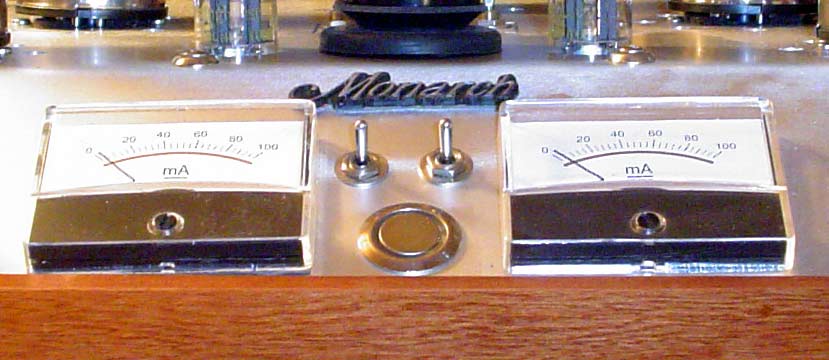I googled "tube bias current", and a lot of hits came up, including this explanation:
"Fixed biasing means the tube is biased by means of a DC voltage, which is usually a negative voltage applied to the grid of the tube with respect to the cathode. As the negative grid voltage is adjusted, the bias current will increase or decrease, depending upon the direction the bias voltage is going. In general, as the bias voltage becomes more negative, the bias current becomes smaller, and the tube is biased "colder". As the bias voltage is adjusted less negative, towards zero volts DC, the bias current becomes larger, and the tube is biased "hotter". This is because a tube is a "normally on" device; that is, it allows current to flow from the cathode to the plate when the grid is at zero volts with respect to the cathode. The tube can be turned off, and the current flow stopped, by making the grid voltage negative with respect to the cathode. The tube can also be biased by referencing the grid to ground, or zero volts DC, and applying a positive DC voltage to the cathode. This is the same as keeping the cathode at ground and applying a negative DC voltage to the grid, because it is the grid voltage with respect to the cathode that determines the amount of bias current in the tube."
Ref:
http://www.aikenamps.com/index.php/what-is-biasing#
This one is more to the point:
"
What is Bias?
Bias voltage is the voltage difference between a tube's cathode and control grid.
Bias current is the amount of electrons flowing from the cathode to the plate with no audio signal on the control grid (idle current).
"
Ref:
https://robrobinette.com/How_to_Bias_a_Tube_Amp.htm
And that's just the first couple hits. I believe so long as people turn to the internet as their first stop for information, that the term bias will continue to have a colloquial meaning different from what it originally meant.
My first stops for clarity on old tube concepts are always Langford Smith, and the Audio Cyclopedia.. But how many people have those books anymore? English evolves, and the colloquial definition will eventually become the accepted one. If I were in your shoes, I would probably write the amp manual to avoid the term bias entirely, e.g. "connect the red lead of the meter to test point one, the black one to the ground terminal. set the scale to volts.., adjust VR1 until the voltage is between X and Y"



